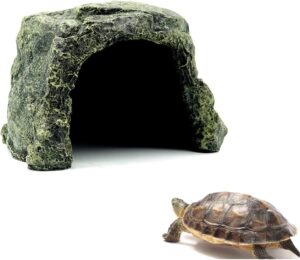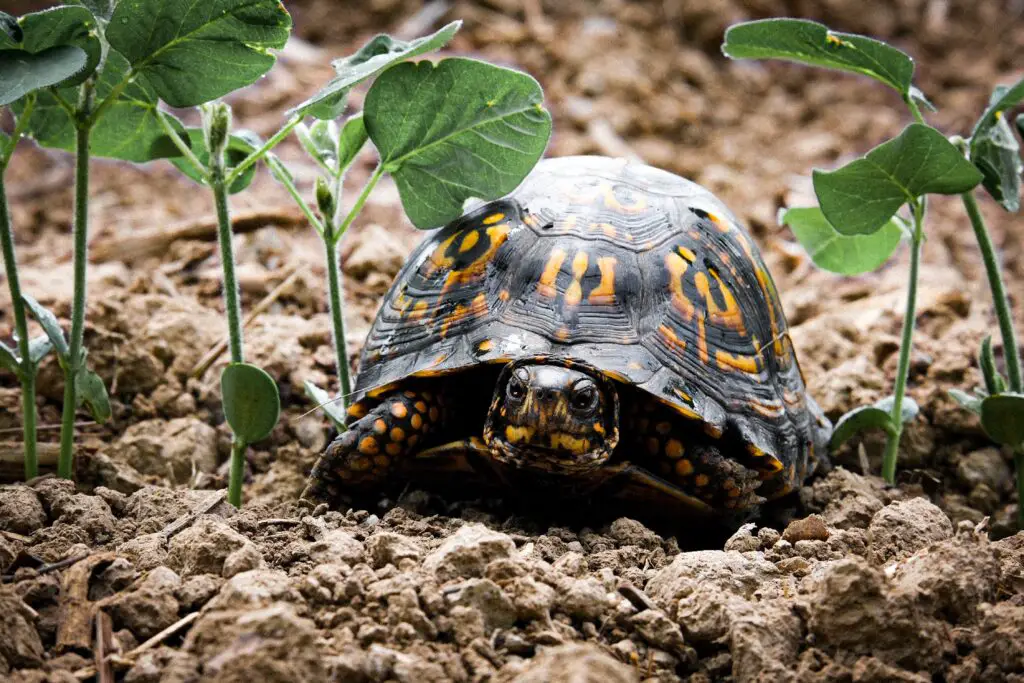How to tell the age of a box turtle
How to tell the age of a box turtle: Welcome, fellow enthusiasts and nature lovers, to the captivating world of box turtles! With their dome-shaped shells, unique locomotion, and remarkable longevity, these intriguing creatures have captured the imagination of many.
In this article, we will embark on a quest to unravel one of the most fascinating aspects of box turtles – their age. By delving into the various methods used to determine their age, we aim to shed light on these enigmatic creatures and contribute to their conservation.
A Brief Overview of Box Turtles and their Fascinating Characteristics
 Box turtles belong to the genus Terrapene and are known for their distinctive hinged shells that allow them to retract completely.
Box turtles belong to the genus Terrapene and are known for their distinctive hinged shells that allow them to retract completely.
These shelled marvels exhibit a wide range of colors and patterns on their carapace (upper shell) and plastron (lower shell), adding an aesthetically pleasing element to their already charismatic presence. These reptiles are renowned for being terrestrial in nature but are also skilled swimmers when encountered near water bodies.
Their ability to retract completely into their shell provides them with exceptional protection against potential predators. Box turtles possess an impressive array of survival adaptations.
They boast strong beaks designed for omnivorous feeding habits that include consuming fruits, vegetables, insects, worms, slugs, mushrooms, small vertebrates – truly opportunistic eaters! Additionally, they have exceptional olfactory senses that aid in locating food sources or potential mates.
The Importance of Determining the Age of a Box Turtle for Conservation Efforts and Understanding Their Life Cycle
Unraveling the age demographics within a population is crucial in assessing its health and overall reproductive success.
Understanding the age structure allows conservationists to identify any potential threats impacting specific age groups, prioritize conservation efforts, and establish proper management strategies. By determining the age of box turtles, researchers gain valuable insights into their life cycle.
This information aids in understanding various aspects, including growth rates, reproductive behavior, longevity, and patterns of movement. Such knowledge is paramount for implementing effective conservation measures that can safeguard these remarkable creatures for future generations.
Moreover, studying the aging process in box turtles contributes to our comprehension of reptilian biology as a whole. Their longevity and ability to withstand environmental challenges offer valuable lessons on adaptation and survival strategies that can inspire innovations in fields beyond biology.
General Indicators of Age in Box Turtles
Size and Growth
One of the key factors in determining the age of a box turtle is its size and growth rate. When we observe younger turtles, we typically notice that they are smaller compared to their older counterparts. These youthful individuals often exhibit slower growth rates due to their developmental stage.
As box turtles mature, they tend to experience a noticeable increase in size over time, reflecting their progression towards adulthood. It is important to note that while there is a general correlation between age and size, individual variations exist within species.
Factors like geographical location, availability of resources, and genetic diversity can influence the growth rate of box turtles. Hence, using size alone as an indicator should be done cautiously, considering other characteristics as well.
Shell Condition
The shell can serve as a valuable source of information when assessing the age of a box turtle. Younger individuals typically possess smoother shells compared to their older counterparts.
The smoothness indicates that they have not yet experienced the same level of exposure or wear as those who have lived longer. As box turtles grow older, their shells develop rougher textures due to various environmental factors and interactions with their surroundings.
Accumulated scars from encounters with predators or injuries sustained during territorial disputes can contribute to this roughness over time. Therefore, by examining the condition and texture of the shell’s surface, one can gain insight into an individual’s age within broad parameters.
Coloration
The coloration patterns on a box turtle’s shell may provide additional clues about its age. In general, younger turtles often display more vibrant hues compared to older ones. Bright yellows, oranges, and reds are commonly observed among juveniles or young adults but tend to fade or darken with age.
These changes in coloration occur due to several factors such as exposure to sunlight, shedding of old scutes, and pigmentation changes over time. The brighter patterns are believed to serve as a form of camouflage or visual signaling for younger turtles, while the muted colors of older individuals may help them blend into their surroundings and avoid detection by predators.
It is crucial to remember that coloration alone cannot reliably determine the exact age of a box turtle. Instead, it should be considered alongside other indicators such as size, growth rate, and shell condition for a more accurate assessment.

Specific Methods to Determine Age
Counting Scutes: A Window into the Past
How to tell the age of a box turtle: One method widely used to estimate the age of a box turtle is by counting the scutes on its shell. Each scute, which are bony plates, represents one year of growth in the turtle’s life.
By carefully examining and tallying the scutes, we can gain valuable insights into their age. However, it is essential to consider environmental factors that might impact scute growth rate.
Variations in food availability and habitat conditions can affect a turtle’s growth patterns, resulting in slower or faster growth rates than expected for their age. While counting scutes offers valuable information about a box turtle’s age, it is not without challenges.
Over time, scutes may experience wear or damage due to natural elements or encounters with predators. This wear and tear can make accurate counting more difficult.
Additionally, some turtles may naturally have missing or fused scutes, further complicating the process. Therefore, it is crucial to employ careful observation and utilize other methods alongside scute counting for more precise age determination.
Examining Growth Rings: Unveiling Nature’s Diary
 Similar to tree rings revealing annual growth patterns, box turtles also have growth rings on their scutes that provide clues about their age. These rings result from seasonal variations in food availability and hibernation periods experienced by the turtle during its life.
Similar to tree rings revealing annual growth patterns, box turtles also have growth rings on their scutes that provide clues about their age. These rings result from seasonal variations in food availability and hibernation periods experienced by the turtle during its life.
By examining these rings under proper lighting conditions with meticulous attention to detail, scientists and researchers can gauge the approximate age of a box turtle. However, this method requires patience and expertise since distinguishing between individual growth rings requires precision.
The rings may be faint or overlapping due to various factors like diet changes or interrupted hibernation periods caused by environmental disturbances such as sudden temperature fluctuations or human intervention. Nonetheless, when conducted carefully by trained experts who understand these potential challenges, examining growth rings can unlock a wealth of information about a box turtle’s age and its interaction with the surrounding environment.
Determining Sexual Maturity: A Window into Adulthood
Sexual maturity is another valuable indicator of a box turtle’s age. As turtles reach reproductive age, certain physical characteristics become apparent.
For instance, in males, the plastron (the lower part of the shell) develops a slight concavity to accommodate mating, while females tend to grow larger in size. These differences arise due to the differing reproductive roles and strategies adopted by each sex.
However, it is crucial to exercise caution when using sexual maturity as the sole determinant of age. While it can provide insights into an individual turtle’s general age range, it does not offer precise information.
Factors such as environmental conditions and available resources can influence an individual’s growth rate and thus its attainment of sexual maturity. Therefore, combining this method with other techniques like counting scutes or examining growth rings provides a more comprehensive understanding of a box turtle’s true age.
To sum up how to tell the age of a box turtle
Understanding how to determine the age of box turtles is essential for conservation efforts and gaining insights into their life cycle. By employing methods like counting scutes, examining growth rings, and assessing sexual maturity, we can unravel valuable information about these fascinating creatures’ past experiences.
Despite challenges like wear or damage on scutes or overlapping growth rings, scientists continue to refine these techniques through careful observation and expertise. Through our efforts to determine their age accurately, we foster a deeper appreciation for box turtles’ resilience and adaptability over time.
This knowledge enables us to make informed decisions regarding their conservation needs while also highlighting the interconnectedness between these remarkable reptiles and their ever-changing environments. So let us continue our quest to uncover the secrets hidden within nature’s timeless diary—the shells of remarkable creatures like the box turtle—ultimately ensuring their survival for generations to come.
Further Reading
How To Keep My Turtle Tank From Smelling
How To Decorate a Turtle Tank: DIY Guide


